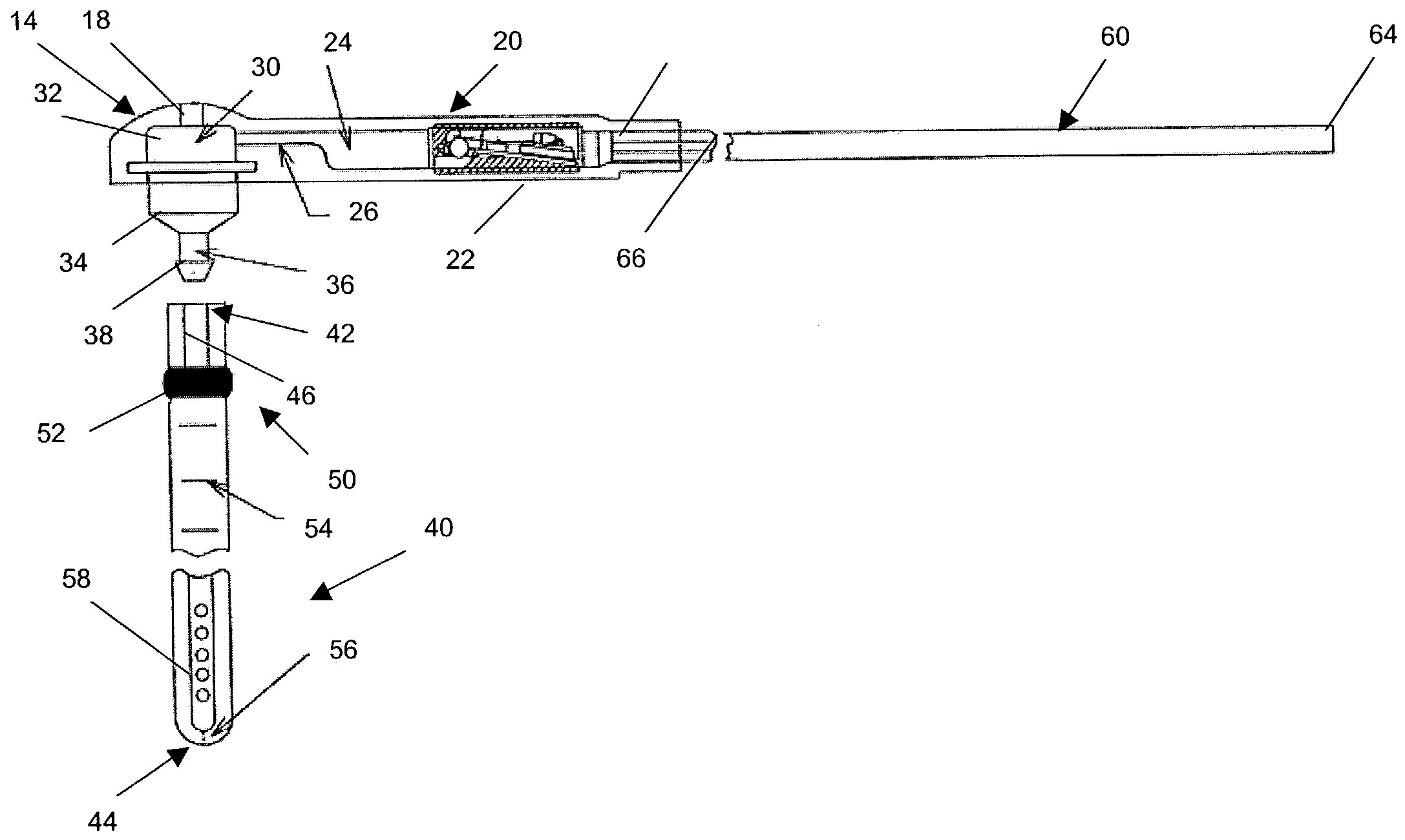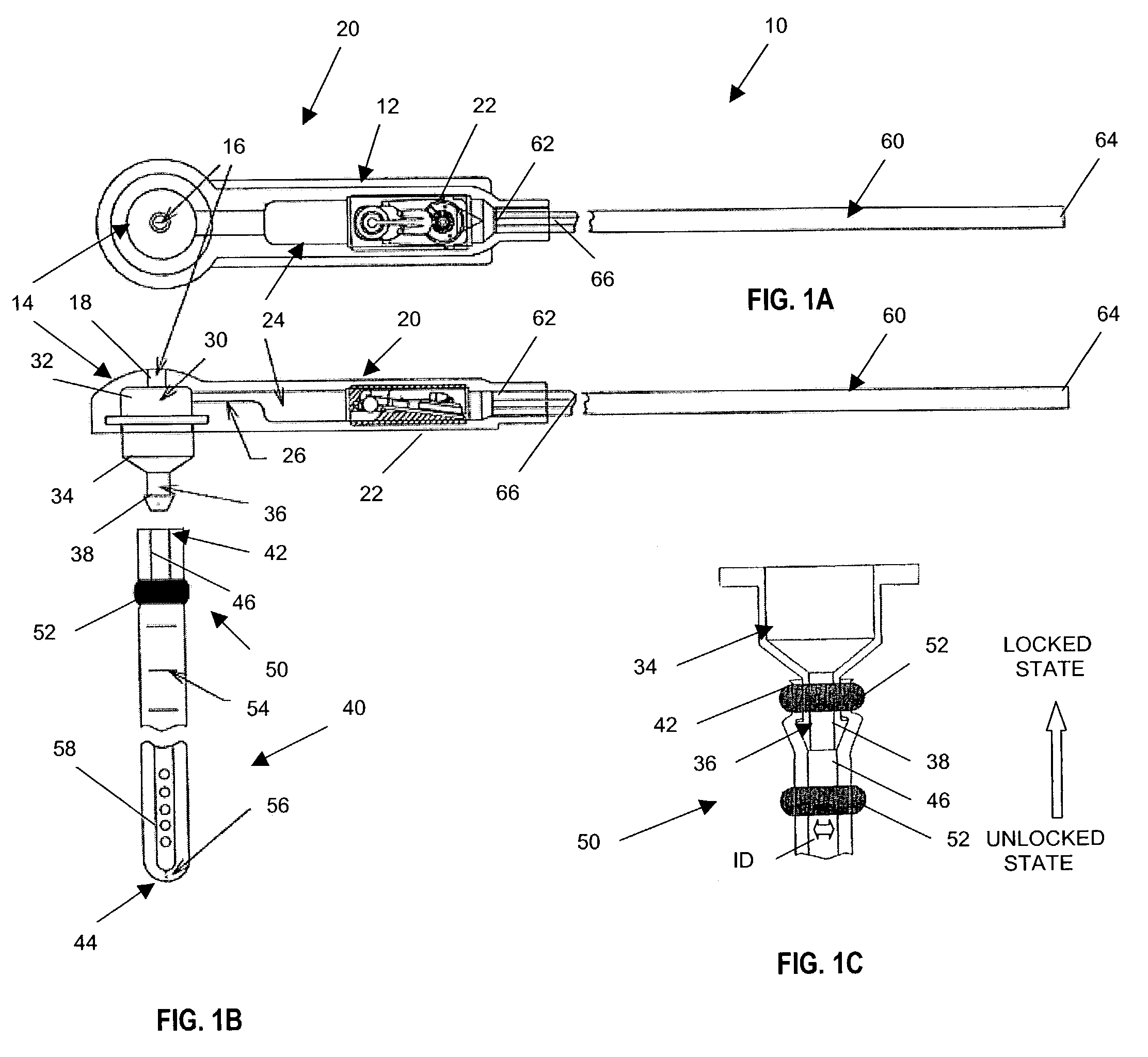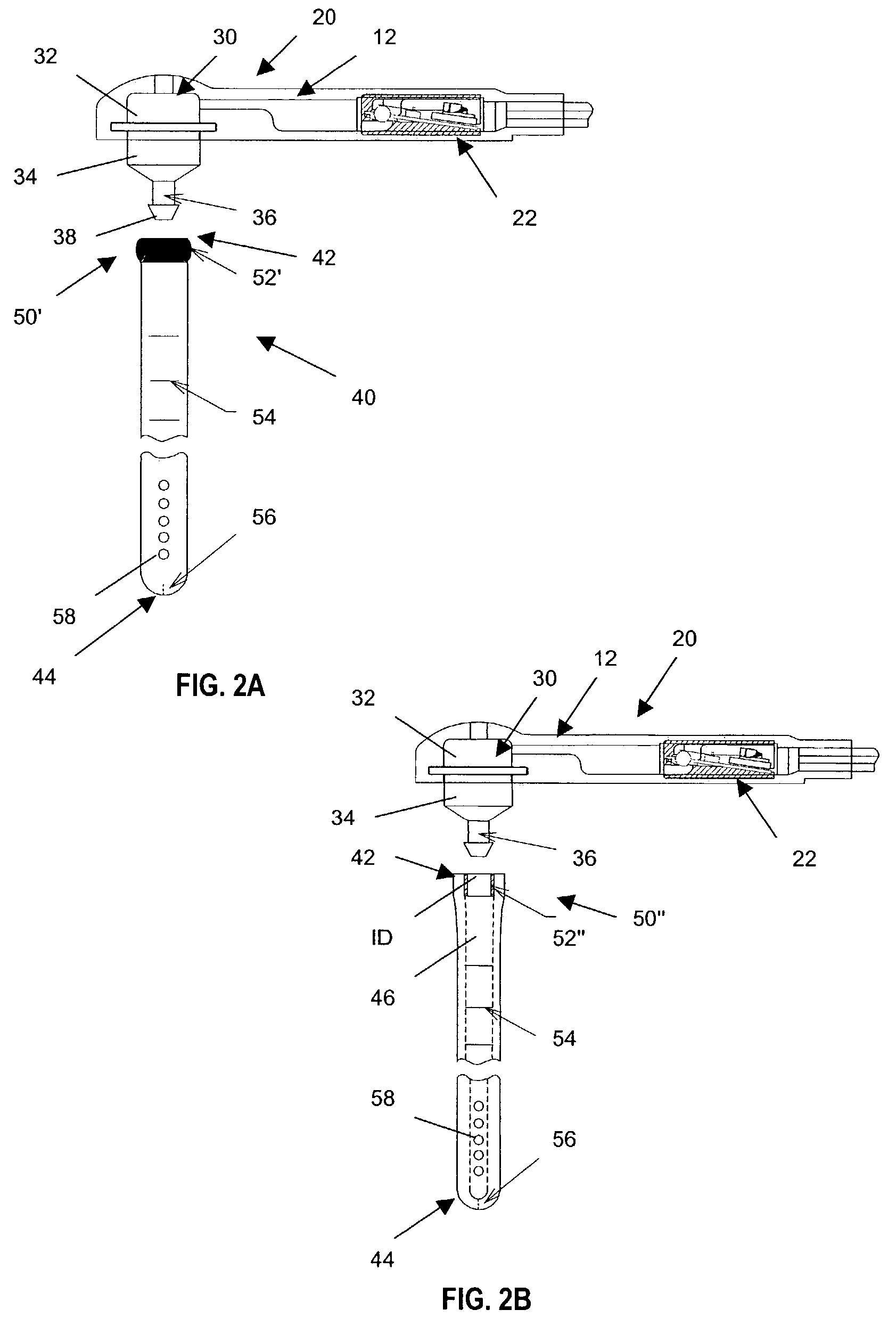Hydrocephalus shunt system with endoscopic placement features
a technology of endoscopic placement and shunt system, which is applied in the field of medical devices, can solve the problems of subdural hematoma, brain tissue compression, and impaired blood flow, and achieve the effect of fast and easy assembly
- Summary
- Abstract
- Description
- Claims
- Application Information
AI Technical Summary
Benefits of technology
Problems solved by technology
Method used
Image
Examples
Embodiment Construction
[0032]The present invention provides a shunt system having endoscopic placement features which allow the system to be surgically implanted and easily assembled using minimally invasive techniques. Turning now to the drawings and particularly to FIGS. 1A and 1B, a shunt system 10 in accordance with the present invention is shown. In an exemplary embodiment of the present invention, the shunt system 10 comprises a shunt device 20 contained within a housing 12. The shunt device 20 includes a valve mechanism 22 for regulating fluid flow into and out of the shunt device 20. The valve mechanism 22 can comprise any typical valve mechanism, such as the ball-in-cone valve illustrated and as described in U.S. Pat. Nos. 3,886,948, 4,332,255, 4,387,715, 4,551,128, 4,595,390, 4,615,691, 4,772,257, and 5,928,182, all of which are hereby incorporated by reference. Of course, it is understood that the valve mechanism 22 can also comprise other suitable valves including programmable valves for contr...
PUM
 Login to View More
Login to View More Abstract
Description
Claims
Application Information
 Login to View More
Login to View More - R&D
- Intellectual Property
- Life Sciences
- Materials
- Tech Scout
- Unparalleled Data Quality
- Higher Quality Content
- 60% Fewer Hallucinations
Browse by: Latest US Patents, China's latest patents, Technical Efficacy Thesaurus, Application Domain, Technology Topic, Popular Technical Reports.
© 2025 PatSnap. All rights reserved.Legal|Privacy policy|Modern Slavery Act Transparency Statement|Sitemap|About US| Contact US: help@patsnap.com



